(As told to Alan Mitchell by Leon White)
Leon remembers that even at very young age, he understood (and respected) the kind of damage a fire could do to a wooden home like his, completely covered with wooden shingles.
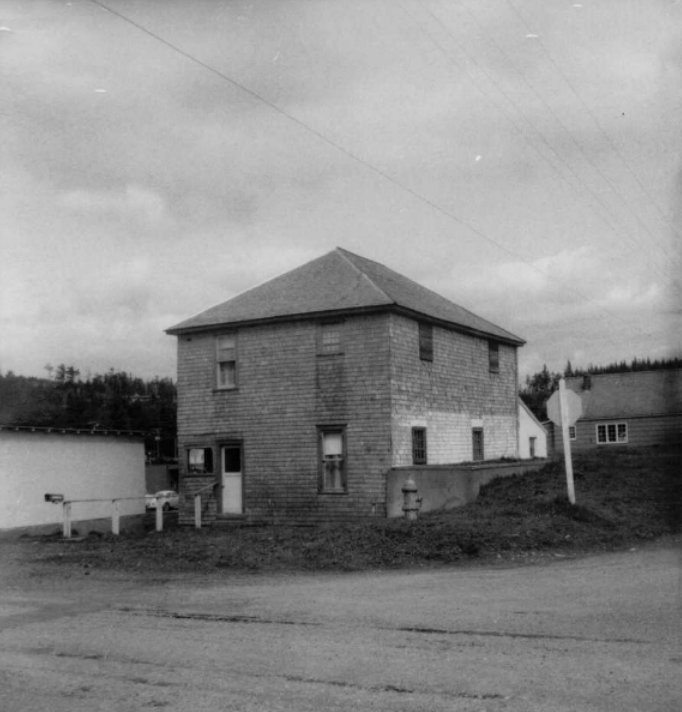
For decades, Chimney fires were a common occurrence in Port Orford because people were heating their homes with wood. The wood they burned was often unseasoned and would cause flammable deposits of wood-tar creosote to accumulate inside of chimneys and metal stove pipes. Because it was like grease, when ignited, it burned extremely hot. A chimney fire could perforate a stove pipe or destroy the mortar in a brick chimney. Fortunately there was a powdered product (Red Devil) for cleaning out chimneys and stove pipes without damaging them.
Fires: Arson, Chimney, Electrical and Wildfires remembered
On 6th Street, a couple of buildings caught fire to the east of “The Club” (Now Point.B Studio). The name of the business was “The Casino”, and there was a restaurant with a card playing room. The cause of the fire was electrical and the building was never rebuilt.
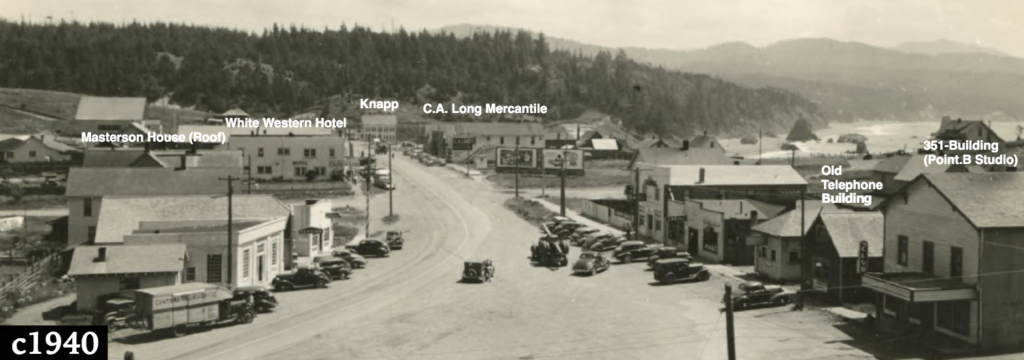
Just east of the Casino was a two story building – The Collins Building. There was a restaurant on its ground floor with a beauty shop and living quarters on its second floor where George and Hazel Collins lived. One night after the town’s fire siren had awakened them, they raised a window shade to see what was happening and saw a wall of flame coming towards them. They and their son, T.J., escaped with no injuries. Fortunately, the fire crew got there quickly and saved the building, using water from the big hydrant in front of Leon’s home at 5th & Washington (Later named Harbor Drive).
The irony is that about seven years later (in 1949) the Collins Building was nearly destroyed by fire. The Collins relocated to Trinidad, California, and the fire happened while they were renting to a member of the Hughes family. The building was repaired later in 1949. George Collins’ sister – Mary Dobbema Yoder – remained in Port Orford and went on to become a 3-term Mayor. Years later, George himself was elected Mayor of Trinidad. Both lived long lives with George making it to 100.
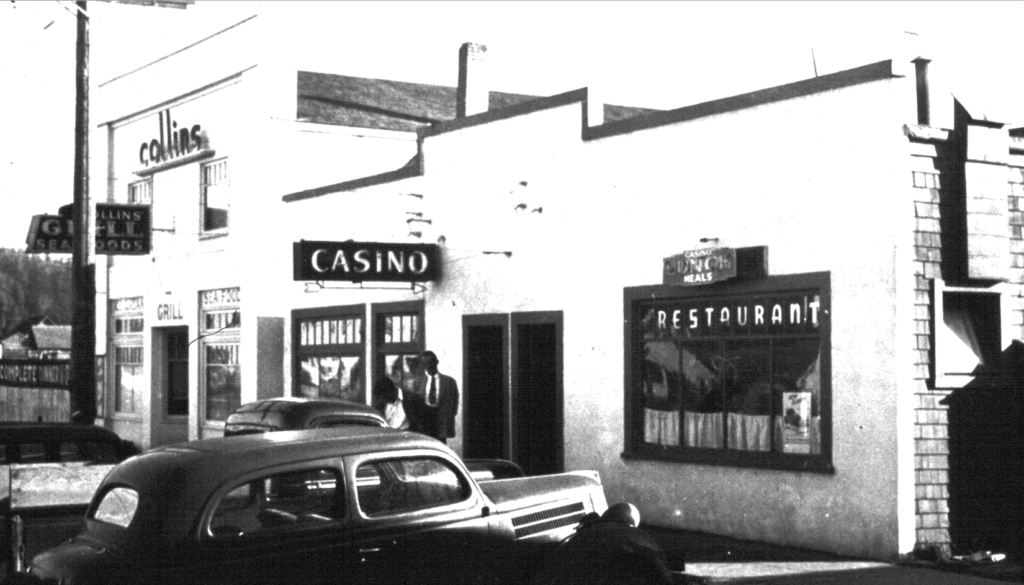
Pitches’ Tavern – a cinder block building – was later built where the Collins Building had been. It is believed that Pitches began ownership of the building in 1955/56, remodeling or rebuiding it entirely. However, a puzzle to Leon is that he recalls seeing a photo with both the Collins Building and Pitches’ Tavern on it.
During the Gable Era of the 1930’s, the town’s first City Hall was located close to the old City Jail on Jefferson Street. The City had an old fire truck which they parked in a garage located further up Jefferson Street. Its hillside location was particularly handy because the firetruck often had to be jump-started in order to run.
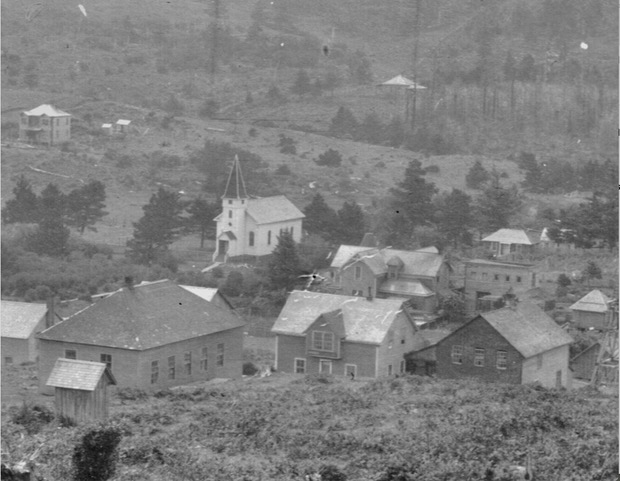
The Forty Family house on Oregon Street where Rick Cook has his Art Gallery has had two fires in its history. Leon remembers seeing the second of them, and running up the hill just west of his home to watch from Carlos and Louise’s home at 590 Oregon Street. There was a lot of smoke and damage to its second story. It really scared him because he realize the same thing could happen to his own Family’s home.
In 1980, he awoke upstairs in the middle of the night to hear fire sirens and looked out, as he always did from first the west and then the north windows. He saw the glow of a large fire in the northwest. Leon decided to go outside to see where the fire was. He walked over to the highway and then west on the sidewalk. The further north he went, the more likely it looked like his place of employment, The Wooden Nickel, might be on fire (after Western States had gone out of business, it had been years since he had been offered a good job until his friend, Alan Mitchell, recommended him to the Wooden Nickel’s owner, Tracy Hassett). His heart sank. Leon kept walking. By the time he got to the theater, he realized the fire was much closer than the Wooden Nickel. Big relief. The Port Orford News Office behind Leo Phillips’ Pharmacy was where the fire was. Days later, arson was suspected because someone had pushed burning paper through the mail slot in the front door.

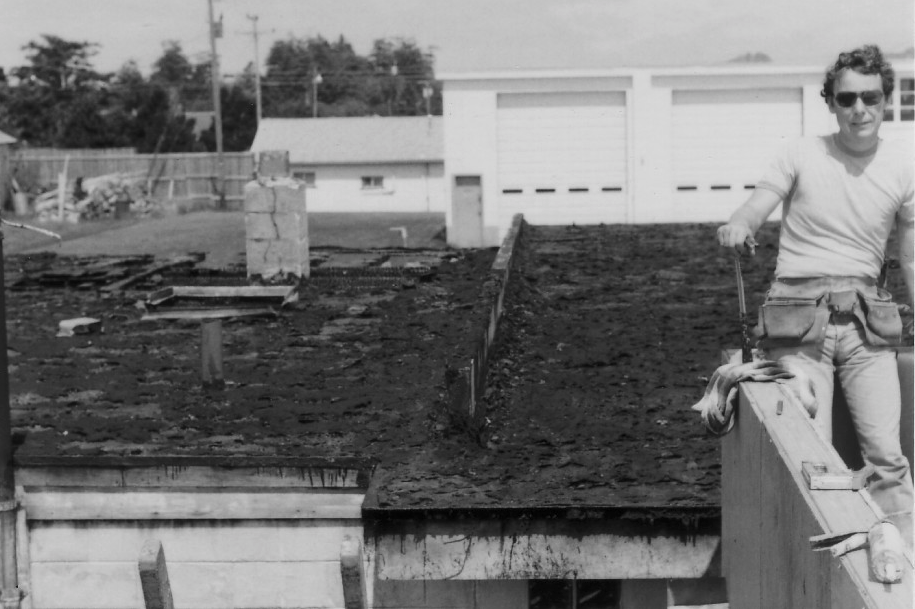
In 1958, the Gable Administration Building burned. It happened during daylight hours. After hearing the tell-tale sirens, Leon noticed a huge cloud of smoke up the hill and to the west of him. During WWII, it had been commandeered by the Military. Since then, most of the building had been converted into a restaurant. What wasn’t used as a restaurant was being rented out as motel-style rooms. A lot of the building was saved, but the main center part of the building and its big garage was lost to the fire. It was proven later that arson had been involved. It was reported one of the arsonists had been hired by the restaurant operator. People were convicted and served jail time.
Sometime in the 1950’s, a fire destroyed Port Orford’s original City Hall. Located close to the City’s Jail on Deady Street, it had been built in the late 1930’s by the City’s first mayor – Gilbert E. Gable. The City Hall was a compact building with just enough room for a large council table and its chairs. The walls were paneled with beautiful Port Orford Cedar wood. Hanging on the walls were professional drawings and paintings depicting American History. Some of the original chairs were saved from the fire and can be found in today’s Gilbert Gable Council Chambers. Arson was the cause of the fire. It had been set by an angry City employee.
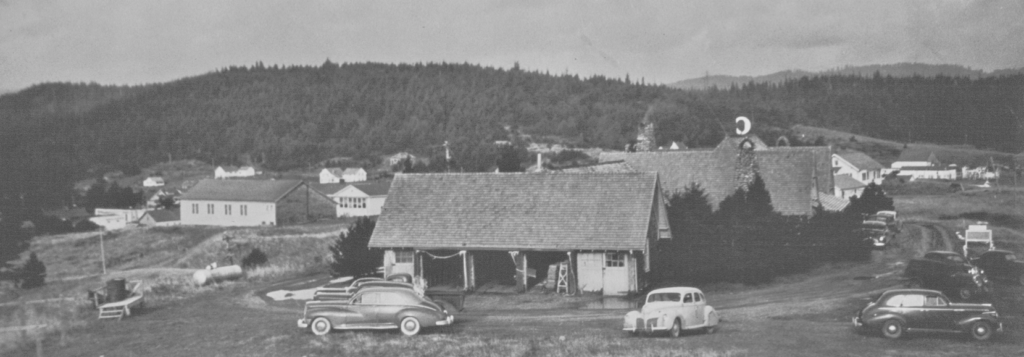
(Cars L-R : 1946-1948 Packard sedan; 1938 Lincoln Zephyr sedan; 1940 Chevrolet 4-door sedan)
The irony here is that both the Administration Building and the original City Hall had been built by Mayor Gilbert Gable only to be targeted later by arsonists.
In 1934, a fire started in the Logger’s Pool Hall. The pool hall stood where the Crazy Norwegians stands today. The whole west end of the block burned, including a bakery, barber shop, restaurant and Bill Bennett’s Mercantile. The fire stopped short of the Charles Long Store (Dana’s). The fire was so hot, it was feared it would spread north across the highway and take out Susie White’s two story Hotel and restaurant. Fortunately, Carlos White (Leon’s Half-Brother) had been issued a portable backpack water pumper when he worked for the Forest Service as a Fire Watcher. He put it to good use and then soldiered on into the night, using that backpack pumper to wet down the south side of the Western Hotel. His efforts were credited with keeping the hotel from catching fire. Susie’s building was not seriously damaged, but the fire had been so intense that its heat reached across Hwy 101, cracking windows and baking the apples she set on her south facing windowsills to ripen.
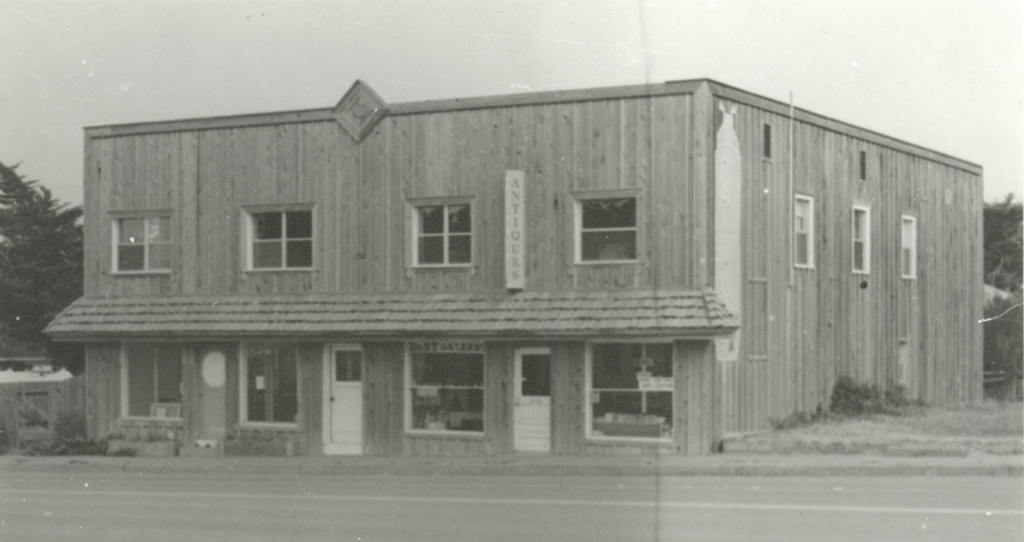
Years ago, on the west side of Hwy 101 north of Sixes, there lived a man who owned a lot of land covered with pine trees and brush. He was a relative new-comer and not one of the area’s old-time families. Every few years, he would use fire to clear parts of it off during the Summer. Whatever he was doing always created huge clouds of smoke. The north wind would drive smoke into Port Orford and put everyone in town on edge, concerned about flying embers. Many times his fires would get away from him and the Forest Service and Coos Forest Protective Association would have to be called in to control them.
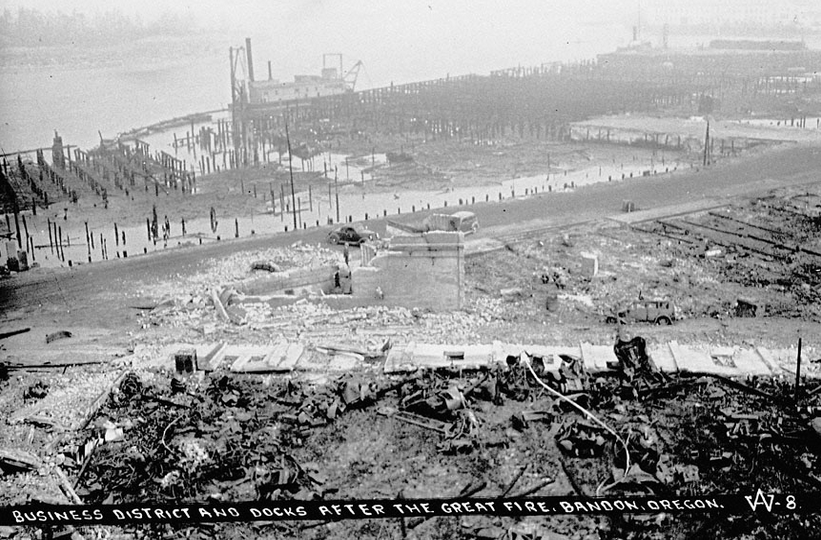

A block west at 5th & Washington, sparks were landing at Leon’s home and yard. He recalls seeing his mother, Pearl using a big water pitcher to drown them.
During the years of major logging in Curry County, the United States Forest Service would dispose of the slash left behind by burning it off during Fall’s first rains. When that was happening, or whenever there were wildfires burning, Leon remembers seeing the red glow of those fires off in the distance behind the hills east of Port Orford.


Leave a Reply